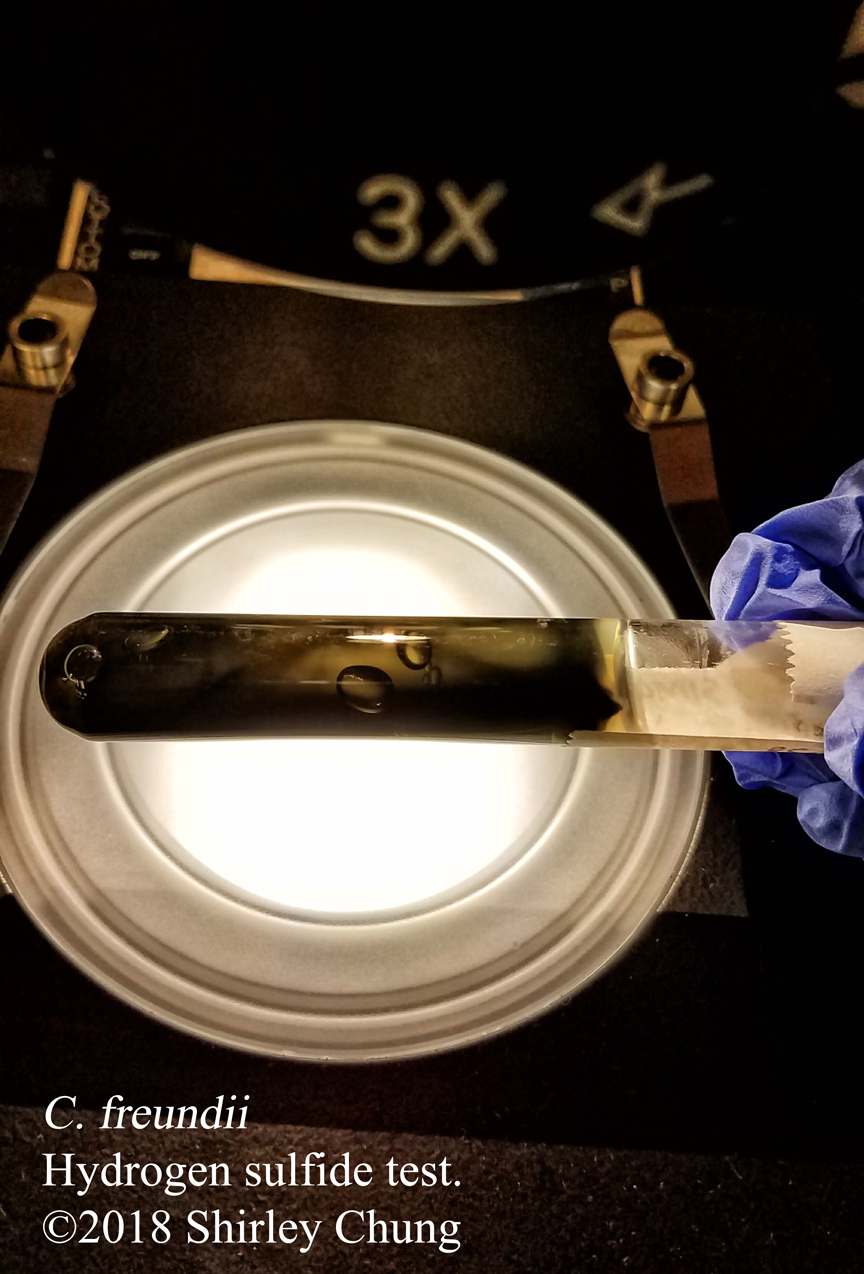Hydrogen Sulfide Test (Cappuccino & Welsh, 2017).
Description. Some bacteria are able to reduce organic/inorganic sulfur sources (e.g. cysteine, thiosulfate) into hydrogen sulfide, H2S. The ferrous ammonium sulfate in the SIM agar (also containing peptone and sodium thiosulfate as substrates in the reduction/hydrogenation of sulfur) deep medium acts as an indicator by forming black precipitate (positive result) in the presence of H2S gas (Cappuccino & Welsh, 2017). The black precipitate “trail” also allows for observation of bacterial motility.
Clinical significance. The Hydrogen Sulfide test helps to separate Proteus/Salmonella (able to metabolize sulfur) from Shigella dysentariae (unable to metabolize sulfur).
Summary of main steps. It is assumed that the reader knows aseptic technique and basic inoculation.
- Using aseptic technique and a transfer needle, inoculate a SIM agar deep tube via straight-line stab.
- Incubate tube at 37°C for 24-28 hours. Observe results.
Reference
Cappuccino, J. G., & Welsh, C. (2018). Microbiology: A laboratory manual.

